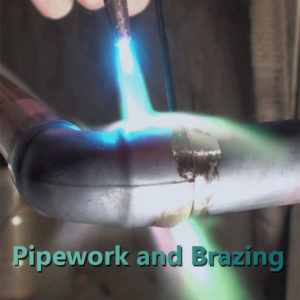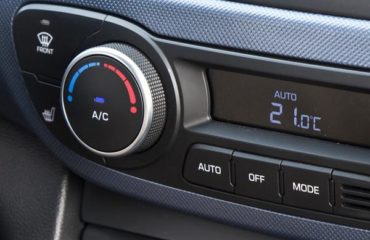Soldering, brazing, and welding are all methods of joining two or more pieces of metal and selected other materials. They are also methods used to fill gaps in metal parts.

In welding, the two metals (or thermoplastic) must be similar. For example, copper cannot be welded to steel. Welding uses high temperatures to melt and join two metal parts. A filler metal is often used as well. When properly done, the finished weld is as strong as the surrounding metal. But if the process is not carried out and the welder applies too much heat, it can change the metal’s properties and weaken the weld. There are several different types of welding, including metal inert gas (MIG), arc, electron beam, laser, and stir friction. Welding is also widely used to slice apart large metal structures by melting through them.
Brazing joins two metals by heating and melting a filler (alloy) that bonds to the two pieces of metal and joins them. The filler obviously must have a melting temperature below that of the metal pieces. Brazing can join dissimilar metals such as aluminum, silver, copper, gold, and nickel. Flux is often used during brazing. It is a liquid that promotes wetting, which lets the filler flow over the metal parts to be joined. It also cleans the parts of oxides so that the filler bonds more tightly to the metal parts. In addition, fluxes are used in welding to clean the metal surfaces.
Properly brazed joints can be stronger than the pieces being joined, but are not as strong as welded joints. Brazing also has minimal effects on the two metal parts.
Soldering is a low-temperature analog to brazing. By the American Welding Society’s definition, soldering takes place with fillers (also known as solders) that melt at below 840°F (450°C). Metals that can be soldered include gold, silver, copper, brass, and iron. The filler, called solder, melts. When it solidifies, it is bonded to the metal parts and joins them. The bond is not as strong as brazed joint or welded one. Solder was once made mainly of lead, but environmental concerns are pushing industry to lead-free alternatives.
Flux is used in soldering, just as it is in brazing and welding to clean the metal surfaces and make it easy for the solder to flow over the pieces to be joined.
Soldering is also used to join electrical components. The joint is not necessarily strong or structural, but electrically connects the parts with conductive solder.
Source: https://www.machinedesign.com/fasteners/whats-difference-between-soldering-brazing-and-welding




